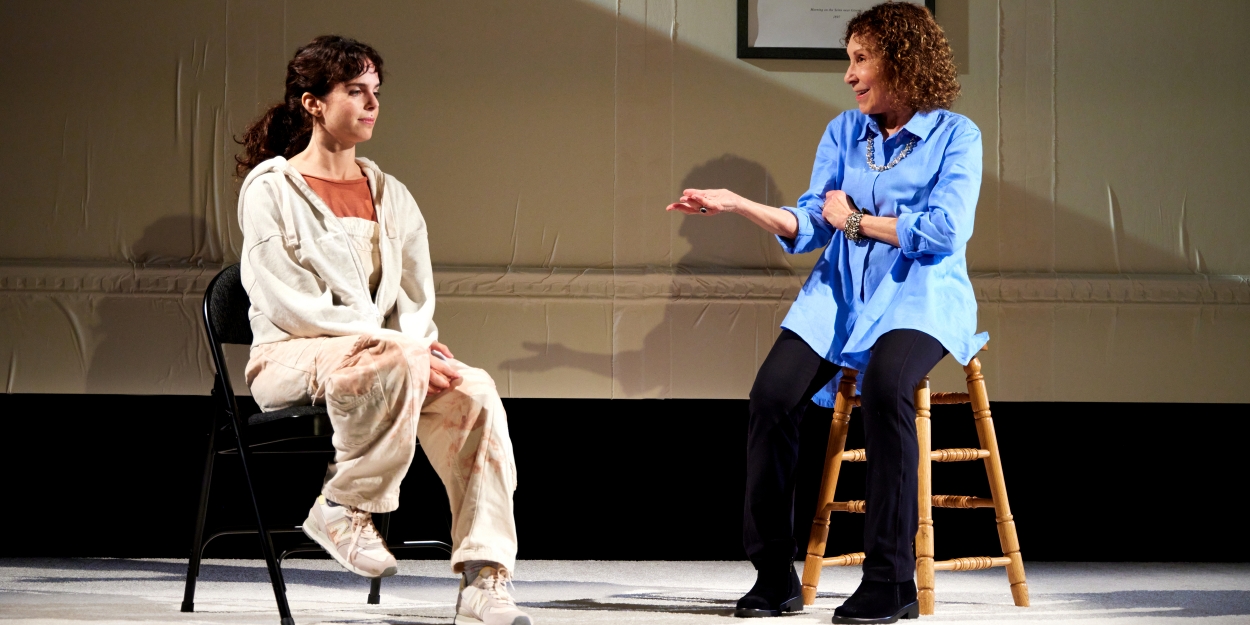Review Roundup: LET'S CALL HER PATTY Opens Starring Rhea Perlman, Leslie Rodriguez Kritzer & Arielle Goldman
LET’S CALL HER PATTY is a comedy about what it means to be a mother, a daughter, or anyone in the world doing their best to disentangle life’s mess.

Lincoln Center Theater/LCT3 is presenting the world premiere production of LET’S CALL HER PATTY, a new play by Zarina Shea, directed by Margot Bordelon, for six weeks only through Sunday, August 27 at the Claire Tow Theater (150 West 65 Street). Read reviews for the production.
LET’S CALL HER PATTY features Arielle Goldman, Leslie Rodriguez Kritzer, and Rhea Perlman.
Patty (Rhea Perlman) is an Upper West Side lady of more than moderate means who’s lived according to self-prescribed rules and routines: lots of exercise and very few calories. When her daughter Cecile (Arielle Goldman) experiences sudden whirlwind success as a sculptor and turns to cocaine to help cope, Patty, with help from her overextended niece Sammy (Leslie Rodriguez Kritzer), must navigate challenges that push her well outside her carefully curated comfort zone. LET’S CALL HER PATTY is a comedy about what it means to be a mother, a daughter, or anyone in the world doing their best to disentangle life’s mess.
LET’S CALL HER PATTY will have sets by Kristen Robinson, costumes by Sarafina Bush, lighting by Oliver Wason, and sound by Sinan Refik Zafar. Kaitlin Leigh Marsh is the Stage Manager.
Naveen Kumar, The New York Times: The production, from the director Margot Bordelon, confines Patty behind her cutting board, where she chops imaginary onions without shedding a tear for much of the play’s brief 70 minutes. If this is a character study, Patty’s pungent, messy center is largely withheld from view.
Jackson McHenry, Vulture: In some of Sammy’s narration, Shea falls back on the point that a woman like Patty is the product of her circumstances. She got into her co-op apartment through a series of breaks of boomerish luck, all of which depended on a postwar New York wealth boom and delivered her into relative comfort and complacency. It’s a true observation, but it needs to be more than just pointed out. You want the play to upset that comfort, and to reckon more deeply with Cecile’s addiction and recovery. But Patty and Perlman win the day. Once Let’s Call Her Patty wraps up, there’s nothing to stop you from wandering away from Lincoln Center and enjoying a perfectly lovely evening at, say, the Upper West Side branch of Carmine’s.
Robert Hofler, The Wrap: Near the end of this 70-minute one-act play, mother and daughter have their inevitable moment in a rehab center. The showdown is a pale imitation of what Carrie Fisher achieved in her “Postcards From the Edge” screenplay when Meryl Streep and Shirley MacLaine have their showdown under similar circumstances. There, the confrontation kicks off the wild ride that is a memorable mother-daughter rivalry. In “Patty,” it comes at the end of the play and only reestablishes Cecile’s status as the play’s weak and soggy link. Margot Bordelon directs.
Elysa Gardner, The Sun: Ms. Shea’s protagonist is, in short, either a stereotype or a flat-out parody of a kind of proudly liberal but self-interested urbanite; the hokum-drenched script, which shutters between comedy and pathos without showing grace in either pursuit, makes it unclear whether the playwright is sending up Patty’s milieu or wallowing in it.
Ameila Merrill, New York Theatre Guide: Kritzer is the production’s saving grace, a study in both perfectly timed delivery and physical comedy. She drops to the floor and rolls under set pieces like a school child in a fire drill, winks at the howling audience as she wisecracks about Patty, and convinces us that an unseen dog is truly onstage. Already a veteran character actor sculpted in the likeness of Perlman, Kritzer carries the play as it meanders and then abruptly concludes. Though Perlman’s comedic chops still shine in some moments, Kritzer’s Sammy is both the heart and humor of the piece. Neither talent, however, is enough to make up for Let’s Call Her Patty’s creative stagnation.
Melissa Rose Bernardo, New York Stage Review: Patty’s trip to see Cecile in a touchy-feely Arizona rehab—their one and only face-to-face interaction—is a terrific study in discomfort. Mom is overly chatty and nervous, daughter is quiet and nervous, and though they’re only a few feet away, they’re miles apart. Goldman is wonderful here, conveying hopelessness, helplessness, and fear in just a few lines. This is the Patty we want to see—tentative, loving, and messy. Or in the next scene, when she and Sammy are talking about Patty’s friend Barbara’s son Seth, and Rita the bead-wearing mom in Al-Anon, and how Cecile might never get better. Those unforced, realistic moments of connection are all too rare in this play.
Jonathan Mandell, New York Theater: The title is the first line that Sammy says at the top of “Let’s Call Her Patty,” and strongly suggests that the character is based on an actual person. This may be a clue to the playwright’s approach. It’s as if we’re visiting someone we may know. A visit doesn’t necessarily have the same rules as a play – the pace is not the same; the information gleaned won’t be as complete. In this case, it also won’t be as satisfying.
Reader Reviews



